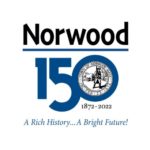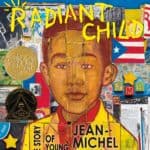
3
MarResource Discovery and Lifelong Learning
 One of the truly great gifts humans are given is a drive to learn. Whether learning a new task for a job, a foreign language, or just pursuing a personal interest, we are always learning and taking in new information from which we can build knowledge. It is exactly that knowledge, and subsequently applying it to various situations that, in turn, builds wisdom.
One of the truly great gifts humans are given is a drive to learn. Whether learning a new task for a job, a foreign language, or just pursuing a personal interest, we are always learning and taking in new information from which we can build knowledge. It is exactly that knowledge, and subsequently applying it to various situations that, in turn, builds wisdom.
This gift of learning is our most valuable trait because it fans those sparks of curiosity that develop into an interest in engaging with the world around us. It doesn’t matter what area of interest you may have, from learning about one’s heritage and ancestry, to classical literature, to cutting edge modern-day science and medicine, as long as you are keeping your mind active and engaged, you are growing and expanding your horizons.
I’ve often stated that if I could be paid to learn, that would be the greatest job in the world. I can think of no more exciting work than learning about a given topic of interest, to gain knowledge about things I find interesting, and to sustain my mind with the impetus to puzzle over things, to think about the “how” and the “why” of a particular subject, to realize an understanding of what had, prior to my investigations, seemed either confusing or unclear.
One of my many interests lies in the fields of Cosmology and Astrophysics; learning about how our universe may have come into being, why time flows as we experience it, and about the biggest, baddest, kids on the universal block – black holes. Modern physics and cosmology have provided us with absolutely mind-bending interpretations of how our universe works, grows, and develops over time. How our universe suddenly burst into being from a seemingly completely empty higher-dimensional void through some random quantum jitters that infused an infinitesimally minute area with energy, forcing a rapid expansion that created space itself, filled with searing radiation that, as it cooled, resulted in the wash of hydrogen and helium particles that eventually allowed for the creation of galaxies, stars, planets, and, thankfully, us. Beings that can now think about the environment in which they exist, and how we are a part of a much greater picture than our mere backyard, or tiny planet in a suburb of our Milky Way galaxy.
Interestingly, this love of Cosmology came to me through serendipitous discovery. I had always had an interest in space since I was very young, and I recall that the first career I ever wanted was to be an astronaut. Yet, because I couldn’t stand math, that desire was never anything more than an unattainable dream, and thus my interest in space always took a backseat to more pressing needs and realistic goals. However, one night I happened to be channel surfing and came across a PBS special on the program Nova. This program was called The Fabric of the Cosmos, and its host and author was a physicist named Brian Greene. I was absolutely enthralled by the new research and discoveries that have informed our modern understanding of the universe and its constituents. Greene’s narrative style opened up the world of modern-day cosmological thinking and new scientific fact. No knowledge of complex math was needed, and aside from an ability to think logically, and from a philosophical perspective, there was no heavy intellectual lifting required. This program was a pivotal point in my renewed love of science and space that has stuck with me for over 15 years and counting.
You can find this program for free through Hoopla, one of Morrill Memorial Library’s many electronic resource providers. I encourage you to check it out, as it could also spark, or revive, a similar interest for you. Yet, this is not the end of the story; this program was, for me, a motivation to continue learning about the ideas and perspectives raised by Greene’s program. I subsequently read the book of the same title, and then pursued other books by Brian Greene to continue to engage with the topic. As well, I began looking over other titles in the physics section, and before I knew it, my appetite for works about cosmology only continued to grow.
My research also led me to the work of Neil deGrasse Tyson, a popular host of numerous programs and books about physics and cosmology. His work entitled Astrophysics for People in a Hurry was a great read, and not nearly as daunting, from a mathematical point of view, as one might expect from the title. This work, and others by Tyson, are available through the library’s electronic resources providers, Overdrive and the Libby app. Tyson also has an offering through The Great Courses, a provider of professor-taught lessons presented in a lecture format. These learning resources are all available to you at no cost, and all you need to access them is your library card!
I also greatly enjoyed the movie Interstellar, starring Matthew McConaughey. This film explores a potential future where the earth’s agricultural capabilities have collapsed due to a “blight” on crops, and the need for humanity to move beyond the earth to survive as a species. The film was produced with careful attention to the latest scientific understanding of black holes, interstellar travel, and the gravitational force. Indeed, there is so much science in this movie that it left me with more questions than answers. Then, one day, while perusing the physics shelf at a local bookstore, I discovered a book entitled The Science of Interstellar by Kip Thorne, a physicist who worked closely with Stephen Hawking. This title is fantastic, as it explores, both clearly and deeply, the science fact and careful thought that the film’s producers, directors, and consultants applied in bringing this epic story of exploration and discovery to the big screen.
James Perlman is the Information Technology and Services Librarian at the Morrill Memorial Library in Norwood, MA. Look for his article in the March 3, 2022 issue of the Transcript and Bulletin.








